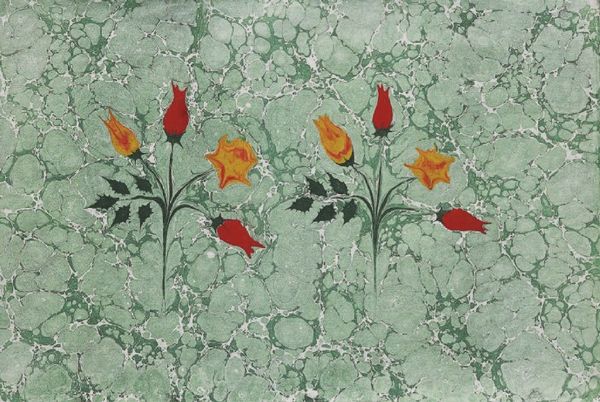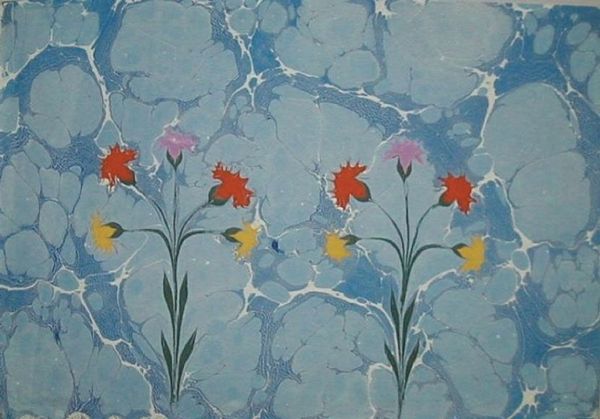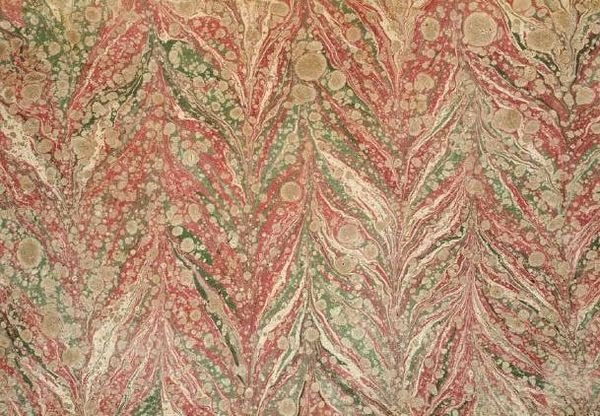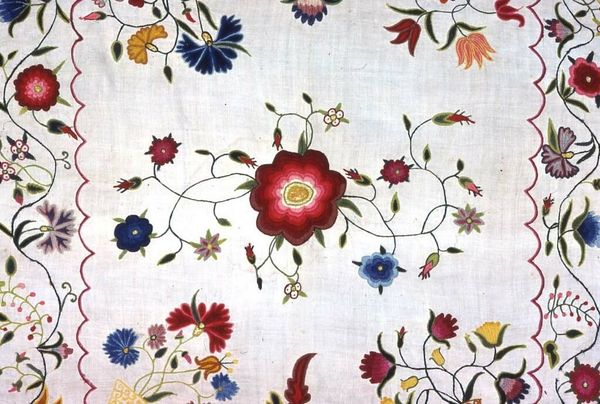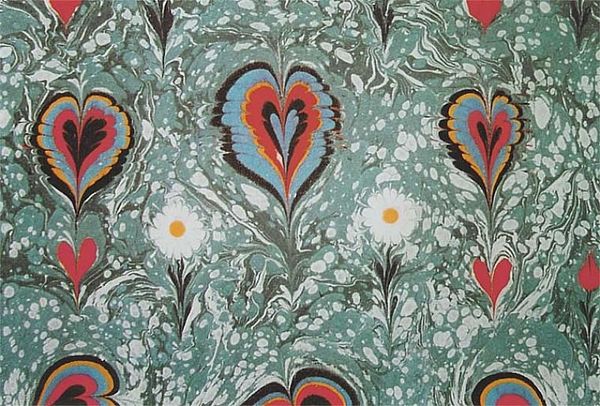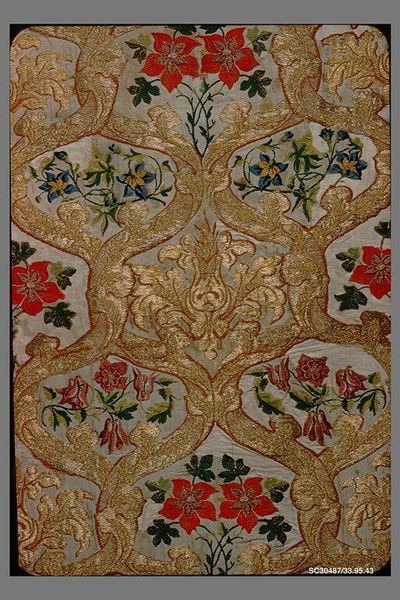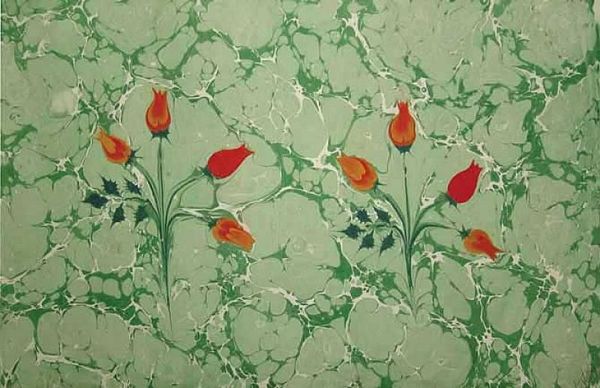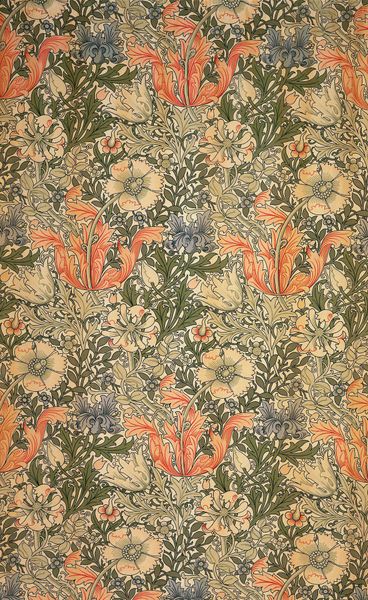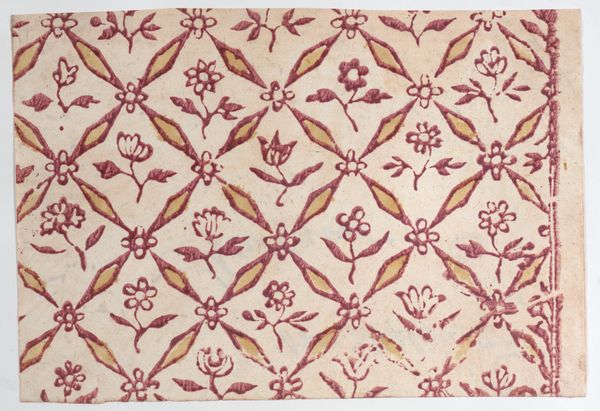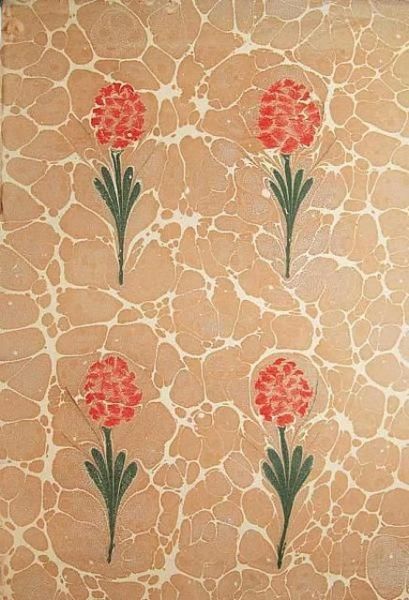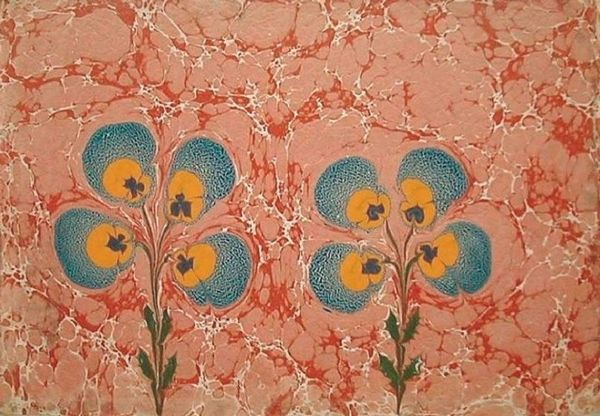
painting
#
abstract painting
#
painting
Copyright: Mustafa Duzgunman,Fair Use
Editor: This is "Composition," a mixed-media work; unfortunately, we don't have the date listed, but the artist is Mustafa Duzgunman. I’m really struck by the combination of the swirling background and these stylized floral elements. What can you tell me about this piece? Curator: Well, let's think about how the technique itself, marbling or "Ebru", traditionally signifies both creation and ephemerality within Sufi traditions. It's not just a pretty backdrop, it embodies the constant flux of the universe, mirroring our transient existence. Now, how do the stylized tulips and daisies challenge or reinforce these ideas? Editor: I see what you mean. The background has a very fluid and dynamic quality, contrasting to these relatively static floral elements. Is this tension intentional, maybe hinting at something about control versus chaos? Curator: Exactly! And if we consider the tulip as a symbol of divinity, often linked to Ottoman court culture, and juxtapose that with the more commonplace daisy, what does that tell us about access to spiritual or political power? Does this artist democratize divine connection? What does it tell us that it is *called* “Composition”? Editor: I hadn't thought about it in terms of power dynamics, but it makes sense! It challenges this divine association by placing them side by side. Curator: Duzgunman encourages us to question the established social and cultural narratives by layering both technique and imagery. What at first appears as a beautiful piece of decorative art is also making a statement on accessibility, on who controls these visual symbols and narratives, even now. Editor: That is a brilliant way to see it, by questioning embedded histories and access to iconography. I really appreciate learning more about it. Curator: Me too. It highlights the important of seeing the hidden messages behind appealing and even seemingly innocuous imagery.
Comments
No comments
Be the first to comment and join the conversation on the ultimate creative platform.
